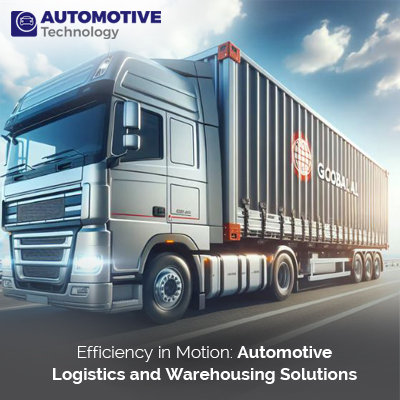Articles
Efficiency in Motion: Automotive Logistics and Warehousing Solutions

In the intricate realm of automotive logistics, where precision and speed are paramount, the role of efficient warehousing solutions cannot be overstated. From raw materials to finished vehicles, every step in the automotive supply chain demands seamless coordination and optimization. In this article, we delve into the complexities of automotive logistics and explore the innovative solutions driving efficiency in motion.
The Automotive Supply Chain Landscape
The automotive industry operates within a vast and interconnected supply chain network. It begins with the sourcing of raw materials such as steel, plastics, and electronics, extends through the manufacturing process, and culminates in the delivery of vehicles to dealerships and ultimately to customers. At each stage, logistics and warehousing play pivotal roles in ensuring smooth operations and timely deliveries.
Challenges in Automotive Logistics
One of the foremost challenges in automotive logistics is the need for just-in-time (JIT) delivery. Manufacturers rely on precise scheduling to minimize inventory holding costs while ensuring that components arrive exactly when needed for production. This requires a finely tuned logistics system capable of swift and accurate transportation.
Additionally, the automotive industry faces global supply chain complexities. Suppliers may be located across different countries, necessitating efficient international logistics solutions to manage customs, tariffs, and varying regulatory requirements.
Innovations Driving Efficiency
1. Automated Warehousing Systems
Modern automotive warehouses are increasingly adopting automation to streamline operations. Automated guided vehicles (AGVs) and robotic systems handle tasks such as inventory management, picking, packing, and loading, reducing human error and speeding up processes. These systems are equipped with sensors and AI algorithms that optimize warehouse layouts and workflows for maximum efficiency.
2. IoT-enabled Tracking and Monitoring
The Internet of Things (IoT) has revolutionized supply chain visibility in the automotive industry. Sensors embedded in vehicles, containers, and pallets provide real-time data on location, temperature, humidity, and other environmental conditions. This granular level of tracking enables proactive maintenance, improves inventory accuracy, and enhances overall supply chain transparency.
3. Predictive Analytics for Demand Forecasting
Predictive analytics leverages historical data, market trends, and machine learning algorithms to forecast demand with precision. In the automotive sector, accurate demand forecasting is critical for optimizing inventory levels, production schedules, and logistics routes. By anticipating fluctuations in demand, companies can minimize stockouts, reduce lead times, and improve resource utilization.
4. Collaborative Logistics Platforms
Collaborative logistics platforms facilitate seamless communication and coordination among stakeholders in the automotive supply chain. These platforms integrate data from suppliers, manufacturers, carriers, and distributors, enabling real-time collaboration, decision-making, and problem-solving. By breaking down silos and fostering collaboration, these platforms enhance agility and responsiveness in the supply chain.
Case Studies in Automotive Logistics Efficiency
1. Tesla's Supply Chain Innovation
Tesla, known for its electric vehicles (EVs), has revolutionized automotive logistics with innovative strategies. The company leverages data analytics and AI to optimize production, inventory management, and delivery scheduling. Tesla's direct-to-consumer model bypasses traditional dealerships, allowing for faster deliveries and a more streamlined customer experience.
2. BMW's Smart Logistics Hub
BMW's Smart Logistics Hub in Germany exemplifies cutting-edge automotive warehousing. The facility employs AGVs, robotics, and IoT-enabled tracking systems to automate processes and improve efficiency. By digitizing warehouse operations and embracing Industry 4.0 technologies, BMW has reduced lead times, minimized errors, and enhanced supply chain resilience.
Future Trends and Challenges
Looking ahead, the automotive industry is poised for further advancements in logistics and warehousing efficiency. Emerging technologies such as blockchain, 5G connectivity, and autonomous vehicles will continue to reshape supply chain dynamics. However, challenges such as cybersecurity risks, sustainability concerns, and geopolitical uncertainties must also be addressed proactively.
Conclusion
Efficiency in automotive logistics and warehousing is a multifaceted endeavor that combines technological innovation, strategic planning, and collaborative partnerships. By embracing automation, data-driven decision-making, and supply chain integration, companies can navigate the complexities of the automotive supply chain with agility and resilience. As the industry evolves, continuous adaptation and investment in cutting-edge solutions will be key to staying ahead in the era of efficiency in motion.



